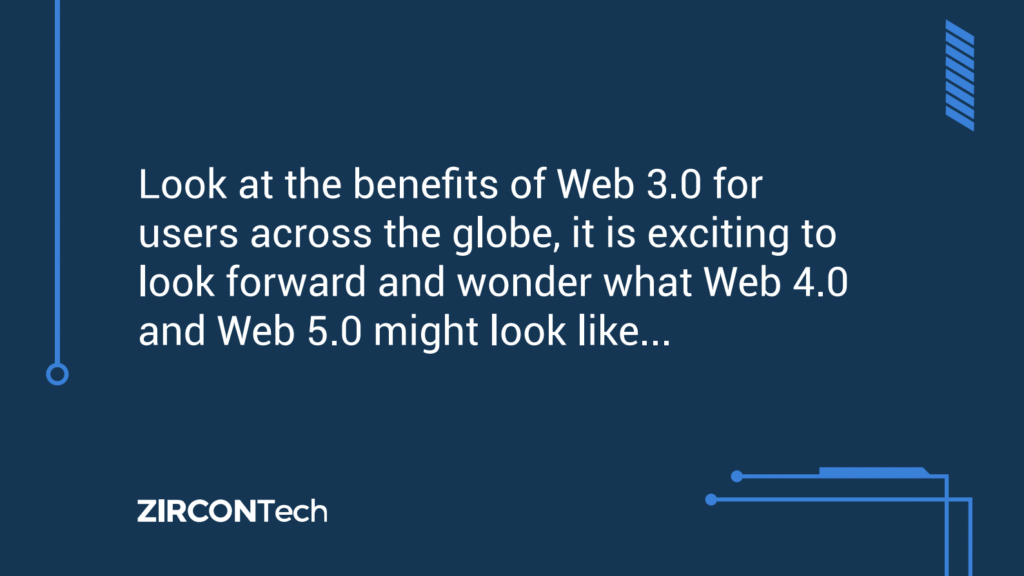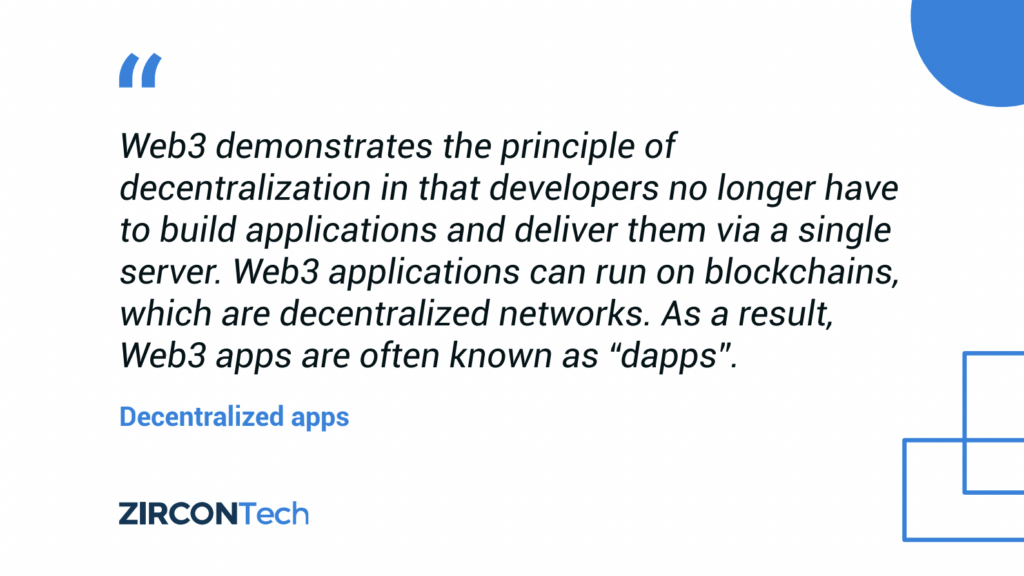
Looking to understand the differences between Web2 vs Web3?
It is hard to conceive of an area of human history that has seen such rapid and far-reaching evolution as the World Wide Web. Even the phrase “World Wide Web” has a dated feel to it. Roughly three decades after the technology it describes took its first hesitant digital steps.
The pace of development in the online space since then has been breath-taking and relentless. We are now at a point where many experts now believe the Web is moving into its third iteration. This is known as Web3 or Web 3.0.
Let us take a detailed look at this new advance, and examine how we got here, and how we can compare Web2 vs Web3. What is the difference between Web2 vs Web3? An analysis of the characteristics of the three generations of the Web in its short life not only highlights the differences between Web1, Web2 and Web3. This also emphasizes the magnitude of the progress that has been made in cyberspace over those few decades.

The concepts that seemed revolutionary in the 1980s now seem outdated in the 2020s. As we compare Web2 and Web3 and consider the benefits of Web3 for users around the world, it’s exciting to think about what Web4 and Web5 might be like and how they could change the world for future generations.
Given the ferocious pace of digital evolution, it is essential that your software needs are catered for by a development partner with extensive experience of Web1, Web2 and Web3. ZirconTech, with our proud history of delivering cutting-edge technological solutions, is ideally placed to be that partner.
The Evolution of the World Wide Web
If there is one word that sums up the Web as we know it today, with all the sophistication we expect from Web2, it is Interactivity. It is strange to recall that, in its early days, the Web was effectively a read-only environment.
The date most commonly given to the launch of the World Wide Web is 1993, following the work of many scientists including Tim Berners-Lee over the previous decade in developing the Internet.
Web 1.0, as it is now commonly known, consisted of websites that displayed content for users to digest. It was effectively a content delivery network that allowed website owners to display information. People who visited such pages were unable to respond to that content.
What is Web2?
While Web1 was a read-only web, Web2 is a read-write web. The biggest difference between the two is that Web2 allows visitors to interact with and create their own online presence. The Internet became a place where users had more control and participation in the content they consumed. Web2 was first mentioned in 2004, but its defining characteristics were already widespread on the Internet. Web2 made it possible for websites to have features we now consider normal, such as:Regenerate response
- Blogs: Web2 gave people the opportunity to create their own websites and to compose their own copy to share with the world.
- Social media: It can be sobering to realize just how recent the birth of social media was. Many platforms that now play a central role in the day-to-day lives of hundreds of millions of people around the world exist solely because of the advances in digital technology that were part of Web2.
- Video streaming: Before Web2, it was not possible to watch video clips of your favorite TV shows or films, let alone imagine being able to watch live footage on a platform such as YouTube.
What added to the pace of development around Web2 was the simultaneous speed of innovation in mobile technology. Not only were people able to access this new, multi-dimensional Internet using the desktop in their home or office, but they could also enjoy it in all its interactive glory through the device in their pocket or briefcase.
What is Web3?
So, what is Web3? What is the difference between Web2 and Web3? More importantly, what is the benefits of Web 3.0? And, crucially, are there any disadvantages that come with this new generation of digital innovation?
The first use of the term Web3 was as long ago as 2014 by Gavin Wood, founder of Ethereum. At the heart of Web3, indeed its defining characteristic is Decentralization. Where Web2 involved a revolution with the front end of websites and the way they interacted with their visitors, the most significant changes under Web3 relate to the back end of sites.

Tim Berners-Lee has referred to Web3 as the Semantic Web, a system in which machines can process content like the human mind, using artificial intelligence and machine learning techniques.
What is the difference between Web2 vs Web3?
The main difference between Web2 and Web3 is in data and app ownership. Web2 centralizes ownership with Big Tech companies, while Web3 decentralizes ownership and stores data on servers throughout its peer-to-peer network. Web3 also offers more connectivity as more devices in the Internet of Things (IoT) can access multiple dapps on blockchains.
Web 2.0 advantages and disadvantages
One of the ways to assess Web2 vs Web3 is through weighing up the pros and cons of each generation of the Web. Let us take a look first at Web 2.0.
Advantages
– You do not need permission to use it, and can access it at any time.
– It is user-friendly, and offers a wealth of information with one click.
– It enables you to interact with others through online services including email.
– You can share documents with friends, colleagues and family.
– It is an ideal medium for promoting your business.
Disadvantages
– Search results may be inconsistent or inaccurate, and can take a long time to arrive.
– It is not possible to connect with others without using their website or email address.
– There is a risk of cybercrime, fraud, and a general lack of privacy.
– A server owner, such a Big Tech firm like Twitter or Meta, can censor any account it hosts.
The benefits of Web 3.0

Now let us consider the positives that will be delivered to users through Web3.
· Users get control of, and ownership of, their data.
· Data can be accessed from anywhere by using cloud and smartphone dapps.
· Blockchains, such as Ethereum, provide a trusted platform where you receive encrypted data.
· It is possible to transfer digital assets quickly and efficiently across borders. There is no centralized body holding up the process by insisting on information relating to income, location, gender or any other socio-political questions.
· There is far less chance of account suspension or disruption. Web3 servers are on a decentralized network, so it is not possible for a single server going down to disrupt an entire network.
· Because of its machine learning capabilities, a user’s online browsing experience becomes extremely personalized.
Disadvantages of Web 3.0
Web 3.0 may not be for everybody. Those with a high level of digital expertise, and a willingness to embrace new innovations and concepts, will undoubtedly be quick adopters of Web3. However, there are disadvantages to this new era of digital engagement.
· The whole concept of Web3 may be challenging for less tech-savvy people to understand. This would make it may be inaccessible for less advanced machines.
· Some experts believe decentralization will lead to a less regulated landscape where the risk of online abuse and cyber crime is higher than before.
· Owners of websites will have to modernize their platforms as apps using them become more popular.
· It is less easy to keep your personal data private, because it is linked to a vast, efficient network.
· Web3 will take up a lot more energy, which means supporting blockchain technology on a major scale may not be feasible.
· Transactions can be slower because data needs to be processed through several computers on a decentralized network, rather than a single server.
Conclusion: Web2 vs Web3

When Web2 came along, it spelled the end of Web1. As a result, he enhanced functionality of the new era was such that Web1 systems quickly became obsolete.
However, we should not expect the same process to be replicated this time round. The advent of Web3 will not automatically mean that Web2 will be quickly consigned to oblivion. For the foreseeable future, it appears certain that we will have plenty of opportunities to compare Web2 vs Web3.
The two systems continue to co-exist.
The simple reason for this is that Web2 still has plenty going for it. There are many compelling reasons why people across the globe, who have grown used to the Internet as it is currently constituted, will want to maintain the status quo.
Web2 vs Web3
When deciding between Web2 and Web3, it depends on how you use the Internet and your level of digital expertise. Many people find Web2 easy to use for their daily lives and are not interested in developing dapps, blockchain, or cryptocurrency. Others find the potential of Web3, such as owning and controlling their own data on a decentralized blockchain, appealing. It’s possible that a hybrid version of Web2 and Web3 could emerge, combining the best of both worlds. To take advantage of Web3, it’s important to work with an agile and experienced software development partner like ZirconTech.